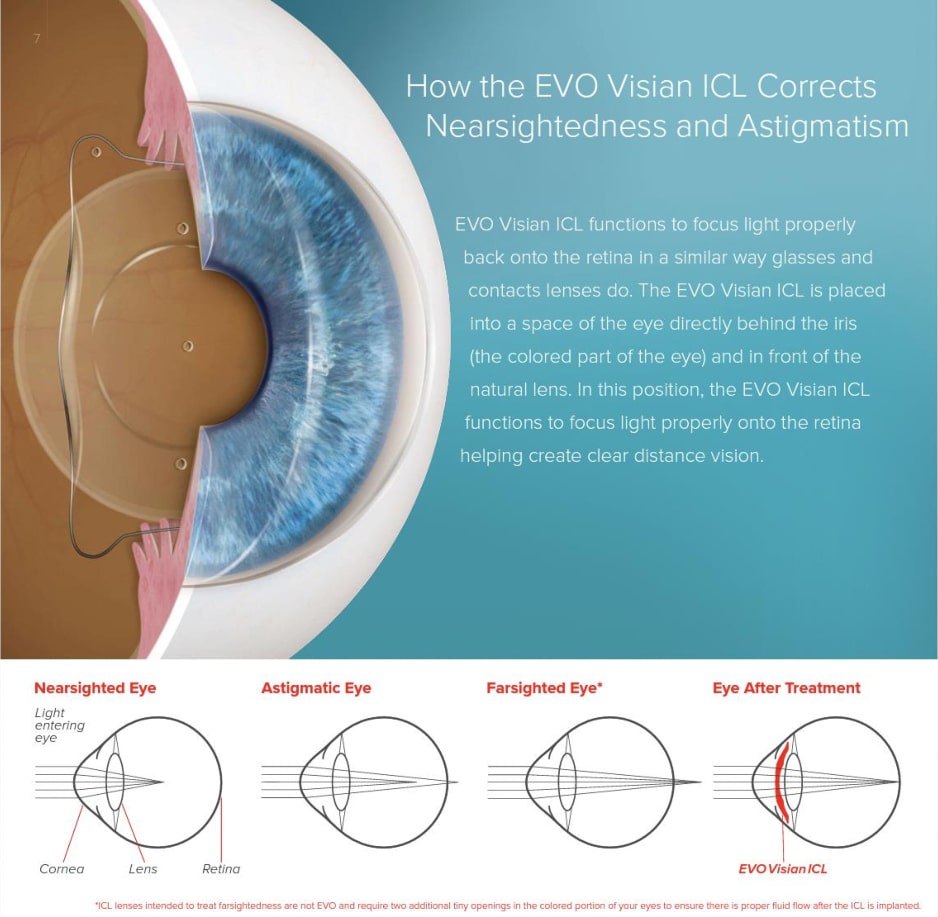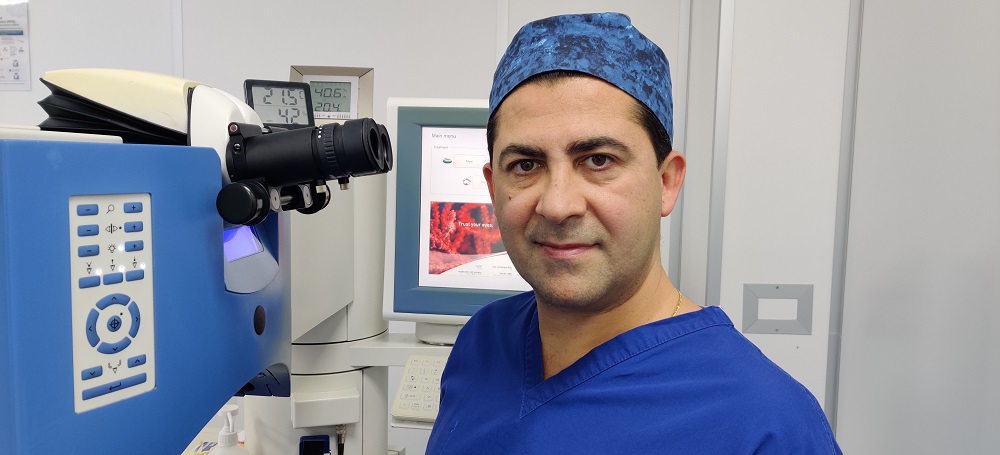-

-



Open six days a week - book a consultation with a specialist now - No Hidden Charges, No Pressure, Affordable
In these type of procedures a specially designed lens implanted into the eye and placed in front of the natural lens to enhance the lens power and correct your vision. Its called phakic (that means lens) as the natural lens remains untouched. It can correct a wide range of prescriptions from short-sighted, Long-sighted to astigmatism and may be even indicated for high prescriptions or more complex prescriptions that are not suitable for conventional laser eye surgery.
It is designed to make you less dependent on glasses and contact lenses, helping you to lead an active lifestyle more easily. The PIOL surgery has a number of advantages over corneal techniques as it is suitable for high prescriptions, with lower production of aberrations (light scatter), and superior contrast sensitivity, as well as keeping natural accommodation of our eyes intact compare to lens replacement surgery.
An Implantable Collamer Lens is a soft, flexible lens that is positioned in the eye between the iris (coloured part of the eye) and natural lens, the new version of these lenses called EVO/EVO+ Visian ICL can be described as additive vision correction. Unlike other procedures, the EVO Visian ICL procedure does not remove corneal tissue, but works in harmony with your natural eyes to provide exceptional quality of vision.

An Implantable Phakic Contact Lens function like usual contact lenses to correct refractive errors. Their difference is that these lenses work from the inner side of your eye instead of sitting on the surface of your eye. Thus, it doesn’t have the usual daily maintenance hassle of cleaning and removing of contact lenses from your eyes. Can treat a wide rage of prescription from short-sightedness (myopia) up to -30 !, long-sightedness (hyperopia), Astigmatism and Presbyopia.
Anterior Chamber Phakic Lens is positioned in front of colour part of eyes (Iris) and divide into few categories including angle supported and Iris-Claw lenses like Artisan lenses, these lenses are used for high prescriptions of long-sightedness or more complex cases.
You would not be allowed to drive for a few days after your surgery. So, it is advised you to come with a family member or a friend, or you can arrange for a transport service.
Your friend or family member can also accompany you for your surgery, treatment, and follow-up appointments.
When you arrive at the clinic, your surgeon will meet with you and greet you, and he or she will go over the procedure with you and answer any question that you might have.
Your optometrist will apply dilating and anaesthetic drops to your eyes, light sedation will also be given to you by an anaesthetist, and this will relax your body.
This means you will be a little aware of what is going on during the surgical procedure, but you will not feel pain, and you will be relaxed and comfortable while the surgery is going on.
What To Expect During The Treatment
Your surgeon will prepare your eye by creating a tiny opening on the surface of your eye. This hole is known as the entry point.
A new lens will be implanted and secured into place. It will be attached to either the front or the back of the iris; the placement depends on the type of lens your surgeon is using. The iris is the circular structure in your eye that determines the eye colour.
After the artificial lens has been inserted, your surgeon will apply eye drops and cover your eye with a shield or patch. This is done to ensure that your eye remains clean and protected.
You will experience some mild discomforts and pain when the anaesthetic starts wearing off. You can use over the counter painkillers to manage this if it is necessary.
You will be asked to go home and rest, and if your second eye needs surgery, you will be asked to come back the following day. You will notice a rapid improvement in your vision after the surgery.
At Optimal Vision, we run aftercare programmes for our patients as part of our services. In this programme, your optometrist and surgeon will recommend that you attend routine aftercare appointment. This usually takes place one day after your surgery, and the next occurs one week after. This aftercare programme lasts for 12 months, and you are also expected to return for regular appointments as scheduled by your optometrist.
For more information, contact us today!

Dr Mani has performed more than 20,000 ophthalmic procedures, including LASIK, LASEK, PRK, Femto Cataract, RLE, Lens ICL and Phakic IOL Surgery
